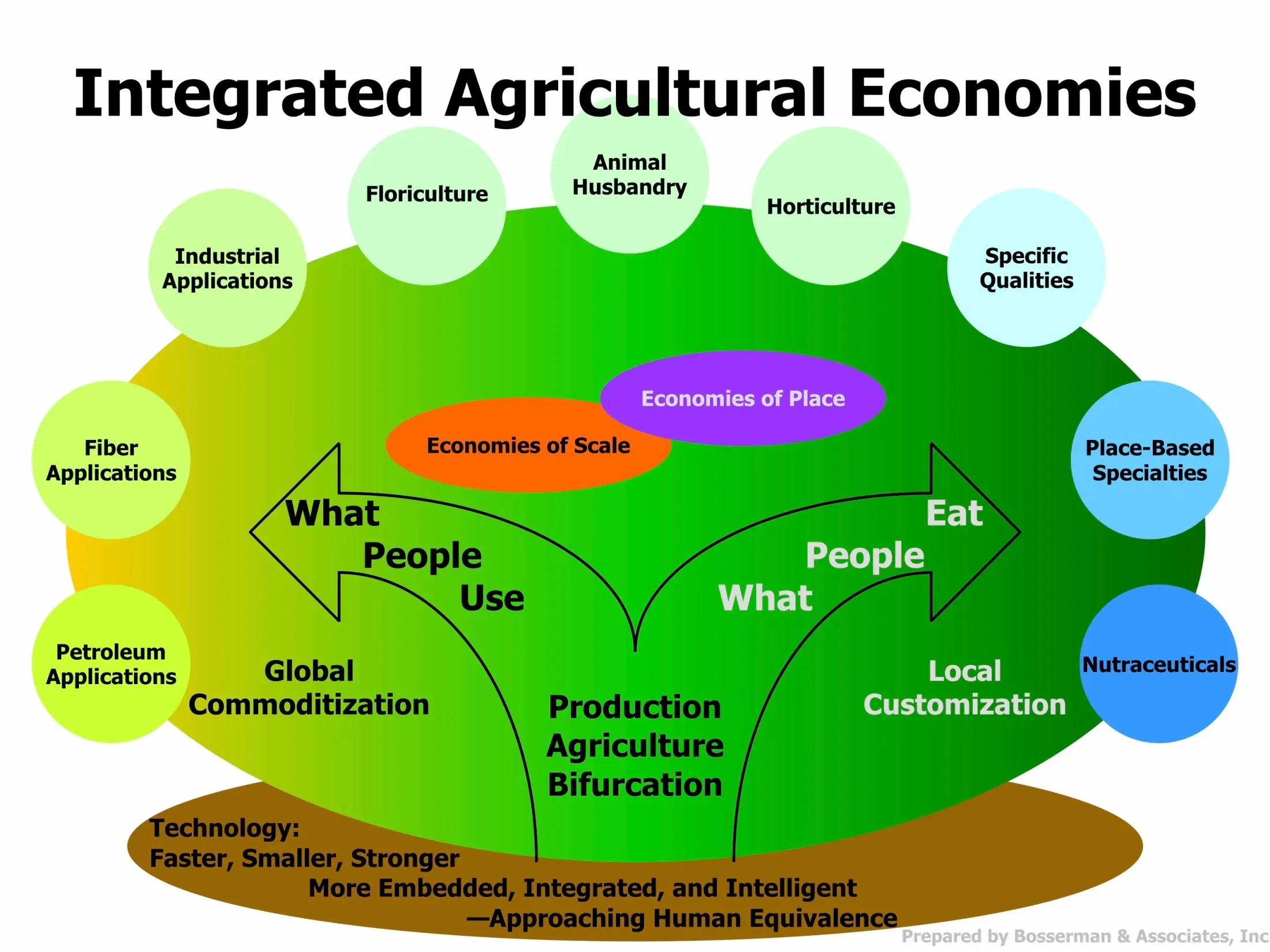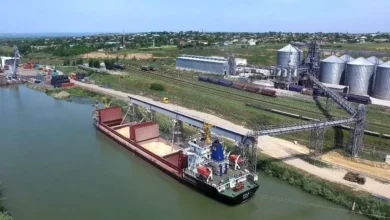Agricultural Economy Impact: Tariffs and Equipment Demand

The agricultural economy impact has become increasingly critical amid rising tensions in global trade, particularly due to the Trump administration’s tariffs and agricultural trade policy. Eric Raby, the senior vice president for the Americas at CLAAS, emphasizes that the uncertainty surrounding these tariffs is creating a challenging landscape for farmers. As input costs rise, the demand for new equipment, especially CLAAS equipment, could waver, affecting farm income and overall productivity. Farmers are re-evaluating their operations, contemplating what purchases are essential and which investments might be deferred. Meanwhile, there are glimpses of opportunity as some dealers report an uptick in equipment demand, particularly from Canadian farmers, highlighting a dynamic shift in the agricultural sector.
The repercussions on the farm economy are evident as changes in trade regulations and tariff structures redefine the landscape for agricultural producers. With the implications of recent trade measures casting uncertainty, farmers are challenged to navigate rising costs and fluctuating equipment demand, particularly in quality machinery like CLAAS equipment. This evolving scenario compels farmers to reassess their financial strategies to protect their income amid shifting market conditions. They must also keep a keen eye on potential avenues for upgrading their operations without jeopardizing their financial viability. As these dynamics unfold, the agricultural sector finds itself at a crossroads, weighing the benefits of investment against the backdrop of an unpredictable economic environment.
Impact of Trump Administration Tariffs on the Agricultural Economy
The recent tariffs imposed by the Trump administration have introduced a level of uncertainty into the agricultural economy that many farmers are struggling to navigate. These tariffs are largely aimed at imported goods, which means that the farmers must now deal with rising input costs that can significantly affect their bottom line. As Eric Raby points out, the escalating costs could lead to a dip in farm income, compelling farmers to reassess their spending and equipment demands for the upcoming planting season. This situation is causing anxiety among agricultural producers, as they attempt to adapt to a changing trade landscape.
Additionally, the tariffs have implications beyond immediate cost increases; they can influence long-term agricultural trade policy and relationships with global partners. For instance, as some products become more expensive due to tariffs, farmers may seek alternatives that could disrupt previously established trade routes and partnerships. This evolving economic environment means that agricultural leaders must remain vigilant and proactive in addressing the needs of farmers, ensuring they have the support necessary to operate efficiently and effectively in such uncertain times.
Understanding Equipment Demand Among Farmers Amid Tariff Pressures
Amid the shifting economic landscape created by tariffs, equipment demand among farmers varies significantly. According to Raby, even though input costs are rising, some farmers are actively seeking to upgrade their equipment, particularly as new inventory comes onto the market at competitive prices. This presents a unique opportunity for suppliers like CLAAS to engage with farmers who are contemplating enhancements to their operational capabilities in order to better withstand financial strain.
However, the need for new and efficient equipment is heavily influenced by a farmer’s immediate financial situation, with many choosing to postpone purchases until the economic outlook stabilizes. This cautious approach to equipment acquisition can impact not just suppliers but also the entire agricultural supply chain, as decreased equipment sales can slow down the economic momentum in rural communities that depend on agricultural activity. Understanding this delicate balance becomes crucial for manufacturers as they consider how best to support farmers during these turbulent times.
Strategies for Supporting Farmers in a Changing Economic Environment
As farmers grapple with the repercussions of tariffs and subsequent changes in agricultural trade policy, implementing strategic support mechanisms is essential. Raby emphasizes the importance of focusing on how manufacturers can aid farmers through enhanced parts availability, service support, and robust research and development efforts. By prioritizing these areas, companies like CLAAS can help mitigate some of the financial burdens farmers face, thus allowing them to maintain productivity and explore new agricultural innovations.
Furthermore, collaboration between equipment manufacturers and dealers plays a vital role in ensuring that farmers are not left to navigate these challenges alone. By fostering strong relationships and providing educational resources about product quality and efficiency, the agricultural sector can create a more resilient operational framework. This synergy not only assists farmers in making informed decisions but also helps to bolster confidence in the market, paving the way for future growth and stability.
The Role of CLAAS Equipment in Enhancing Farm Productivity
CLAAS, as a leading global equipment manufacturer, holds a critical position in enhancing farm productivity through innovation and quality machinery. The company’s commitment to developing advanced agricultural technology provides farmers with the tools necessary to optimize their operations and maximize yield, even under fluctuating economic conditions brought about by tariffs. By offering reliable equipment designed for efficiency, CLAAS enables farmers to navigate the complexities of input costs while aiming to sustain or increase their production levels.
Moreover, the appeal of CLAAS equipment extends beyond its initial purchase; farmers are also attracted by its long-term performance and reduced maintenance costs. This ensures that investments in new machinery can yield positive returns over time, even when agricultural profits are squeezed. As market dynamics evolve, it’s crucial for manufacturers like CLAAS to continually innovate to meet the changing needs of farmers, making sure they remain a valuable partner within the agricultural economy.
Exploring Opportunities in South American Agricultural Markets
While the U.S. agricultural landscape faces challenges due to tariffs, the international market presents new prospects for growth, particularly in regions like South America. Eric Raby’s observations about increasing equipment demand from Canadian farmers suggests that regional markets are responding differently to overall economic pressures. This opens avenues for CLAAS and similar companies to expand their reach into South American markets, where agricultural demand may be growing robustly due to various local conditions.
Entering South American markets could prove beneficial not only for manufacturers but also for local farmers who may gain access to high-quality engineering and technology. CLAAS’s expansion can support investment in modernizing agricultural practices in these regions, promoting sustainable growth and contributing to overall enhancement of the agricultural economy. It also allows manufacturers to diversify their portfolios, reducing dependency on a single market and potentially stabilizing revenue streams amidst domestic uncertainties.
Long-term Effects of Agricultural Trade Policy Changes on Farmers
The agricultural trade policies enacted by the government have long-term implications for farmers’ operational strategies and financial health. With tariffs potentially affecting profit margins and even leading to shifts in market supply chains, farmers must brace for lasting changes in how they do business. These policies often dictate the cost of inputs and the availability of resources essential for maximizing efficiency, thus playing a crucial role in shaping future agricultural practices.
As the landscape continues to evolve, farmers will need to remain adaptable, developing strategies that account for both domestic and international influences on their livelihoods. This may include diversifying crop production, exploring new markets, or investing in technology that enhances quality and reduces manual labor, ensuring that they remain competitive regardless of changes in agricultural trade policy.
Navigating Equipment Investment Decisions in Uncertain Times
Making equipment investment decisions during uncertain financial times can be challenging for farmers. With the looming impacts of tariffs affecting input costs, farmers are likely feeling hesitant about committing to new machinery purchases. As Eric Raby notes, many are performing thorough assessments of their current needs and may consider postponing such investments until they have a clearer picture of future economic conditions.
Navigating this decision-making process requires farmers to balance the urgency of upgrading aging equipment with the risk of incurring significant expenses. Strategic planning, financial forecasting, and consultations with equipment manufacturers can guide farmers in making informed decisions that align with their financial goals while enhancing productivity, even in a turbulent market.
Strengthening Relationships Between Farmers and Dealers During Tariff Challenges
As tariffs create operational challenges for farmers, strong relationships between equipment dealers and farmers are more crucial than ever. These relationships can foster trust and collaboration, enabling dealers to provide tailored support and strategic advice to farmers facing increased input costs. By effectively communicating equipment options and financing solutions, dealers can help ease the burden on farmers as they navigate tough financial waters.
Moreover, integrating information feedback loops where farmers can express their needs and challenges can significantly enhance the dealer-farmer dynamic. This synergistic approach not only allows for responsive service but also ensures that agricultural suppliers remain attuned to market demands and can adapt their offerings accordingly. Strengthening these relationships fosters a healthy agricultural ecosystem, helping to insulate both farmers and equipment manufacturers from the adverse effects of economic volatility.
Evaluating the Future of Agricultural Equipment Industry
The agricultural equipment industry is at a crossroads as it faces both challenges and opportunities arising from current economic conditions influenced by tariffs. Manufacturers like CLAAS are looking into innovative solutions that would not only help farmers cope today but also prepare for the future. Emphasis on research and development plays a key role in ensuring that new technologies and machinery can better withstand fluctuating market conditions and meet the evolving needs of agricultural producers.
Moreover, keeping an eye on global trends and consumer preferences can shed light on future demands in the agricultural equipment space. The industry may need to focus on sustainability, efficiency, and adaptability to ensure they remain relevant and valuable to farmers navigating a constantly shifting landscape. As technology advances, the interplay between agricultural trade policy and equipment innovation will play a significant role in shaping the future of the agricultural equipment industry.
Frequently Asked Questions
How are Trump administration tariffs impacting the agricultural economy?
The Trump administration tariffs are raising input costs for farmers, which can negatively affect farm income. Increased costs can lead to a reduced demand for agricultural equipment, which is crucial for farming operations. As tariffs create uncertainty in agricultural trade policy, farmers are reassessing their business strategies, potentially delaying equipment purchases.
What effect do tariffs have on equipment demand for farmers?
Tariffs imposed by the Trump administration can lead to increased prices for both domestic and imported agricultural equipment, impacting equipment demand among farmers. As input costs rise, farmers may be hesitant to invest in new machinery, opting instead to maintain current equipment or postpone upgrades, which in turn affects the agricultural economy.
How is CLAAS responding to changes in agricultural trade policy?
CLAAS is actively monitoring the impact of the Trump administration’s tariffs on the agricultural economy and equipment demand. Eric Raby, the senior vice president for CLAAS, emphasizes the importance of supporting farmers and their dealers. CLAAS is also focusing on providing attractive pricing on new inventory and exploring opportunities in markets like South America to help mitigate the effects of trade policy.
What challenges do farmers face due to increased equipment costs from tariffs?
Farmers are facing significant challenges as tariffs increase input costs, which can strain farm income. With rising expenses, many farmers are carefully evaluating their financial situations, leading them to delay decisions on newer equipment purchases that are essential for enhancing productivity. This cautious approach significantly impacts the agricultural economy.
Is there a shift in equipment demand from Canadian farmers following tariffs?
Yes, following the introduction of tariffs, CLAAS has noticed an increase in equipment demand from Canadian farmers. This suggests that while U.S. farmers are facing challenges, neighboring markets may present opportunities for equipment manufacturers, reflecting a shift in agricultural trade dynamics in light of current policies.
What opportunities arise for farmers regarding equipment upgrades despite tariffs?
Despite challenges posed by tariffs, there are still opportunities for farmers to upgrade their equipment. CLAAS has observed that the availability of attractively priced new inventory presents a chance for farmers to invest in advancements that can improve efficiency and productivity in their operations. This is vital for maintaining competitiveness in the evolving agricultural economy.
| Key Point | Details |
|---|---|
| Tariffs and Trade Policy | The Trump administration’s tariffs and trade policy are expected to impact the agricultural economy significantly. |
| Input Costs | Newly announced tariffs may increase input costs for farmers, affecting their profitability and equipment demand. |
| Farmer’s Perspective | Farmers are reassessing their operations and may consider postponing purchases due to economic pressures. |
| Opportunities for Upgrading | Despite challenges, opportunities exist for upgrading equipment with new inventory available at competitive prices. |
| Market Trends | Increased equipment demand has been observed from Canadian farmers, with plans to expand into South American markets. |
Summary
The agricultural economy impact is becoming increasingly pronounced due to recent tariffs and trade policies implemented during the Trump administration. These changes are leading to heightened input costs for farmers, which in turn affects their equipment demand and overall profitability. As farmers navigate these turbulent waters, they are re-evaluating their operations and may delay investments in new equipment. However, opportunities remain, particularly for those looking to upgrade, as new inventory becomes available at attractive pricing. Additionally, the rising demand from Canadian farmers presents a potential growth avenue for market expansion. Understanding these dynamics is vital for stakeholders in the agricultural sector.




